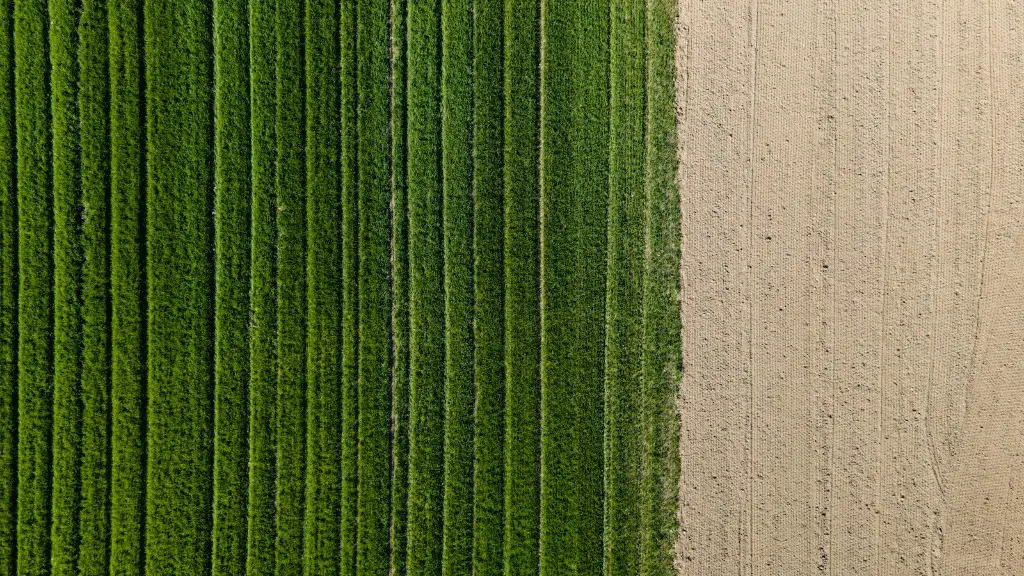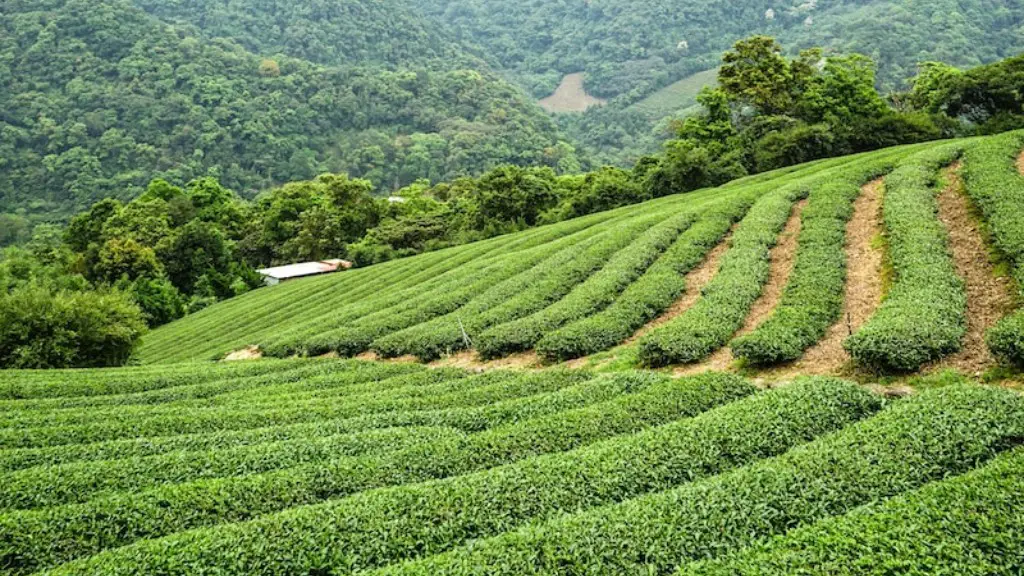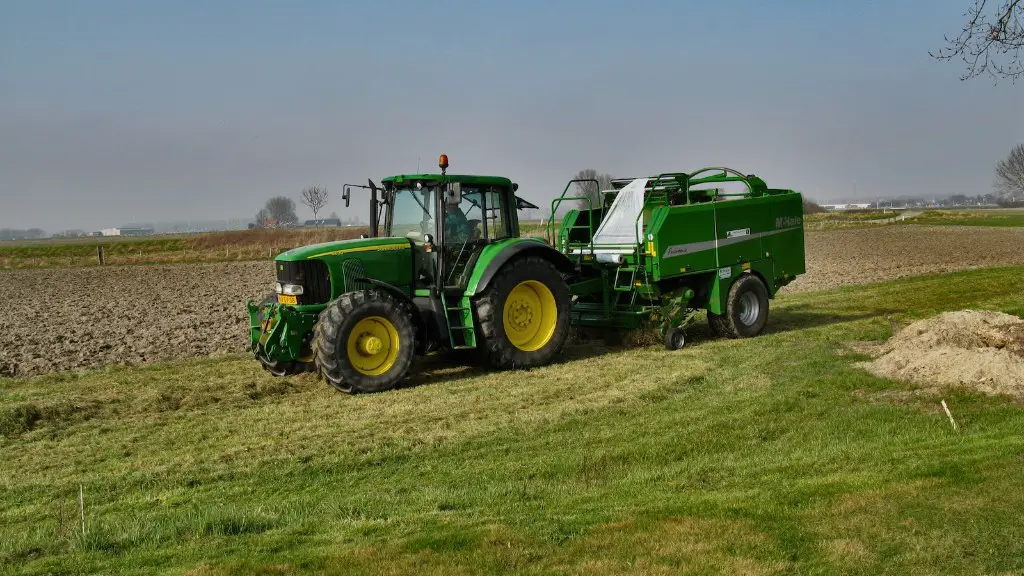Typically, archaeologists trace the beginnings of British agriculture back over 6,000 years, with evidence of cereal production in various parts of the country. Obviously, the move towards an agricultural lifestyle would have had a huge impact on local populations, providing the potential for larger, more complex and densely populated settlements. Neolithic people likely began settling in the British Isles and introducing farming around 4000 BC, establishing homes in villages and developing a more sedentary way of life.
Generally, British agriculture was defined by grasslands and access to rivers, which provided ideal conditions for cultivating arable crops such as wheat and barley. This form of cultivation provided great stability for the Neolithic farmers, allowing them to stockpile resources and reduce their reliance on hunting and gathering.
Interestingly, the Neolithic period in Britain didn’t involve horses, milking or large-scale animal husbandry – at least not until the Bronze Age, when the use of stable-based sheep, pig and cattle husbandry began in earnest. This saw a shift in the way the new farmers worked the land, allowing them to diversify and establish new forms of animal-rearing.
At the turn of the new millennia, the Iron Age saw a further expansion in agriculture, with forests being cleared and more land being brought under cultivation. This had a huge impact on the social structure of Britain at the time, allowing for more intricate settlements as well as a greater demand for land.
Today, although there have been significant changes in the way British agriculture is managed, many of the same principles and ideas established by early farmers over 6,000 years ago are still applicable to modern-day farming. This goes to show just how far British agriculture has come and how much progress has been made.
The spread of farming methods
The Neolithic people of Britain developed varied techniques and approaches to farming, including hand tools such as hoes and ploughs, techniques to improve soil fertility and crop rotation. Over time, these innovations spread from one region of the country to the other, leading to increased efficiency, increased yields and more productive land.
It is likely that early British farmers were initially primitive and limited in their skills, as archaeological evidence suggests that simple digging sticks were used for tilling the soil and planting. However, it appears that some farmers had a good understanding of animal husbandry, as evidence suggests that sheep, goats, pigs and cows were widely kept and managed by Neolithic farmers.
Due to their geographical location, the British Isles could also benefit from trade from mainland Europe, particularly through the exchange of livestock and agricultural produce. Indeed, the notion of foreign influences is particularly evident in the case study of cattle farming, which appeared to have been first introduced in Britain during the Bronze Age.
It should also be noted that animal husbandry led to an increased use of domesticated plants, with certain crops being produced specifically for stock-rearing. Alongside wheat and barley, oats, rye, hay and straw were also widely grown, with each crop playing a particular role in the emerging British agricultural economy.
Establishment of permanent settlements
The introduction of agriculture saw the emergence of permanent settlements in Britain for the first time, with evidence of Neolithic dwellings and field systems emerging around 4000 BC. This pattern of settlement spread from southwest and southeast England and eventually across the entire country, with larger and more complex villages beginning to take shape in the Iron Age.
At this time, the increased output from farmers saw the development of trade networks, with goods flowing from different parts of Britain and into Europe. In addition, it also saw the emergence of a hierarchical, class-based society, with the wealthy having better access to land and resources than lower income groups.
The introduction of more sophisticated farming methods, such as the use of oxen-driven ploughs, crop rotation and fertilisers also had a major impact on British agriculture, allowing previously infertile land to be made productive. This development helped to increase food production, feeding the increased population and making more food available for surplus trading.
Furthermore, the rise of industrialised Britain in the 19th century led to yet more changes in agricultural practice, with the introduction of new machinery and better crop rotation strategies becoming commonplace. The development of chemical fertilisers and new methods of land reclamation also helped to drive up output and increase the efficiency of farming operations.
Developments in storage and transportation
Over the past 6,000 years, the storage and transportation of agricultural products has been an area of significant development and improvement. Initially, crops were stored in simple grain pits or clay bins, with no refrigeration or modern methods of preservation. However, the gradual development of mills and grain stores, as well as improved means of transport such as the railways, saw a dramatic improvement in the efficiency of agricultural production and distribution.
The introduction of refrigerated trains during the 19th century was particularly significant, allowing food to be kept fresh over longer distances. In addition, improvements in the shipping of agricultural products also had a huge impact, allowing farmers to export their goods to places further afield. This led to the emergence of large-scale commercial agriculture, with many of the major British farms today still reflecting the practices of their 19th century predecessors.
More recently, the emergence of cold-storage technologies has allowed farmers to keep perishable foodstuffs for longer periods, increasing their shelf life and improving their marketability. In addition, the introduction of computerised farm management systems has also allowed farmers to better monitor their crops and livestock, making it easier to spot potential problems and respond quickly to changing conditions.
Overall, it is clear that British agriculture has come a long way since its beginnings over 6,000 years ago. The introduction of innovative farming methods, the emergence of commercial farms and the advancements in storage and transportation have shaped the landscape of the country, with British farmers now supplying a wide range of products to customers both at home and abroad.
Impacts of technological advances
It is clear that the development of technology in Britain has had a major impact on modern-day farming practices. From automated farm machinery to the use of drones and robots, the introduction of new technology has transformed the way farmers work and improved the efficiency of production. This has enabled farmers to increase their output, reduce their costs and improve their yields.
In addition, the dramatic improvement in communication technology, such as mobile phones and the internet, has allowed farmers to easily access markets and services from a variety of sources. This has enabled them to keep up to date with the latest developments in their industry and find the best deals available.
Finally, the introduction of modern genetic engineering technologies has allowed farmers to develop crops with enhanced characteristics, such as drought and pest resistance, improved nutrition and higher yields. This has enabled them to grow more food with fewer resources and increase their overall efficiency.
Overall, it is clear that technological developments have played an integral role in the development of British agriculture. These advances have enhanced farmers’ ability to produce more food with fewer resources, while also allowing them to reduce their costs and improve their yields.
Changes in the environment
It should also be noted that agricultural practice has had a huge impact on the British environment over the past 6,000 years. As forests were cleared for land to be used for farming and settlements, habitats for many animals were lost or damaged, leading to the loss of species and the fragmentation of ecosystems. This, as well as the increased pressure from farming operations, caused widespread changes in biodiversity and the landscape.
The widespread use of chemical pesticides, herbicides and fertilisers has also caused pollution to both the air and water, posing a risk to human health. In particular, nitrates and phosphorus from fertilisers have caused algal blooms in rivers, lakes and ponds, while the over-application of chemical pesticides has damaged insect and bird populations.
More recently, the increasing demand for biofuels has seen a shift in land use, with certain areas being allocatedfor energycrop cultivation. This has caused further damage to the environment, as the cultivation of such crops can have a negative impact on soil quality, water resources and biodiversity.
Overall, agricultural practice in Britain has had a huge impact on the environment, with a variety of negative effects being observed. As such, it is important for the British government to ensure that farming operations use sustainable and environmentally-friendly methods, in order to protect and preserve the environment for future generations.





